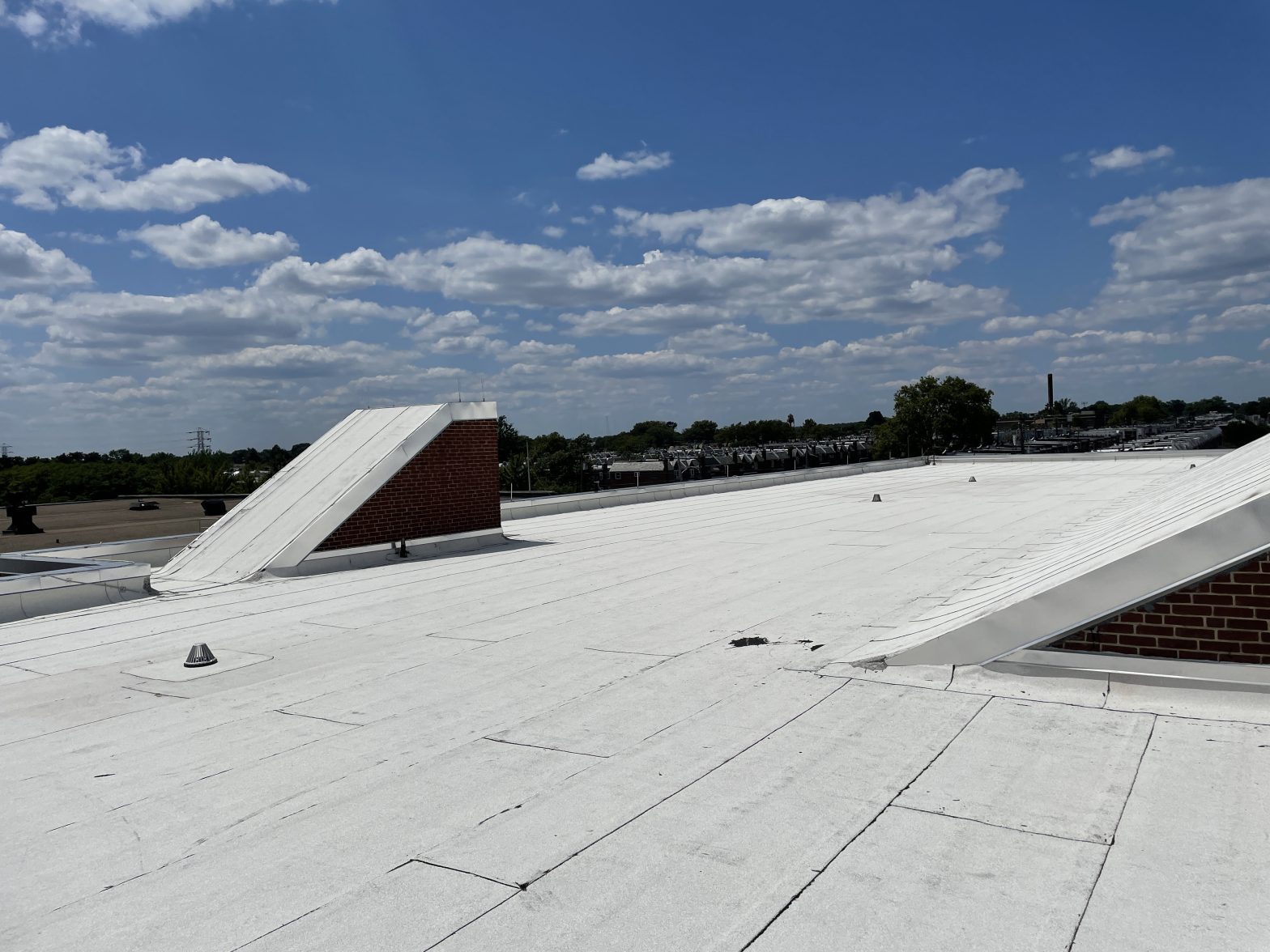
What is thermal shock? How does it affect a roof?
Thermal shock is one of the leading causes of premature roof failure, according to the roofing experts and manufacturers. Thermal shock occurs when a thermal gradient causes different parts of an object to expand by varying amounts. This differential expansion can be understood in terms of stress or of strain, equivalently. At some point, this stress can exceed the strength of the material, causing a crack or split to form. If nothing stops this crack from propagating through the material, it will cause the object’s structure to fail.
Everything contracts and expands as it heats and cools. Each component of a building or roof (wood, concrete, steel, asphalt, single ply, etc.) has its own contraction and expansion rate.
“The potential for problems from expansion and contraction exists from the time the roof is first installed.”
Not only do all the components contract and expand during the hot/cold, day/night, winter/summer cycles, but the potential problem is further amplified by the fact that many times two or more components are joined together in a single system, and those components have vastly different contraction and expansion rates. As an example, take a common roof system of a steel deck, aluminum roof edges and an asphalt roof membrane. You can imagine the different contraction/expansion rates occurring, while the different materials are attempting to stay attached each other. Three components contracting and expanding, but to differing and varying degrees.
The potential for problems from expansion and contraction exists from the time the roof is first installed. However, since the new roof adhesive and membranes are new and flexible, the roof is able to flex (contract and expand) without apparent harm. As the roof system is subject to varying temperatures, weather, repetitive wind cycles and UV, the adhesives and membranes become less flexible. The system then becomes dry, brittle or stiff. The flexing that originally did little harm now begins to cause issues at flashings and in the field. Cracks and splits usually first occur at flashing points where various components intersect and experience drastic movement causing leaks to develop. As the leaks become worse, repairs or replacement is usually warranted.
So what options are there for a building owner?
Most manufacturers are now offering maintenance plans upon completion of new roofs. Lifecycle costing models prove that through a maintenance program, building owners can extend the life of a new roof 5-10 years past its original life expectancy or more through a smart maintenance program. Understanding that a roof is typically depreciated over 39 years and the average new roof has a life expectancy of 20 years, it makes good business sense to protect your investment and maximize its life expectancy an additional 5-10 years. Utilizing cost analysis, it’s very easy to see that maximizing life expectancy of a new roof out to 25 or 30 years offers an excellent return on investment while minimizing your capital expenditures. Most maintenance plans are a minimum investment for a building owner while offering terrific returns.
“A typical maintenance plan usually averages less than $1,500.00 per year, emergency repairs may cost 5 times more on average.”
With this model, we’ll assume a typical roof with a 20 year No Dollar Limit Warranty. The contractor has the responsibility for the first two years of the warranty with the manufacturer being responsible for the last 18 years.
A typical maintenance plan usually averages less than $1,500.00 per year, emergency repairs may cost 5 times more on average. Another issue is during winter months, the materials available to utilize for repairs becomes limited due to application temperature limitations of most materials. Most adhesives, sealants and coatings cannot be applied below 40 degrees effectively. This only compounds the problem of trying to perform emergency repairs during winter months on a maintenance issue that could have been addressed during warmer months under a routine maintenance inspection.


